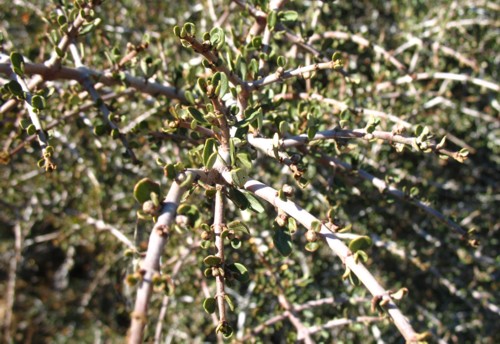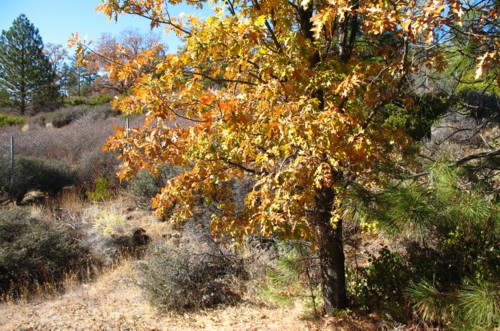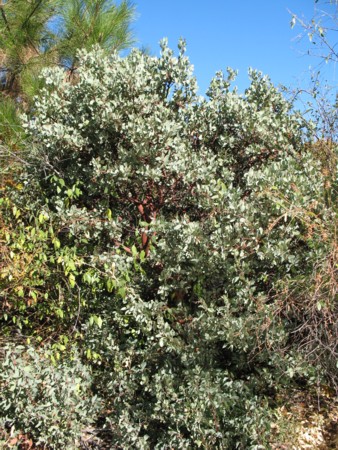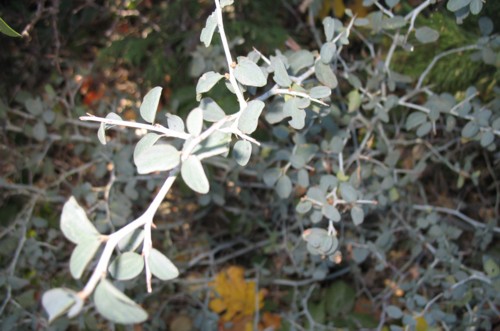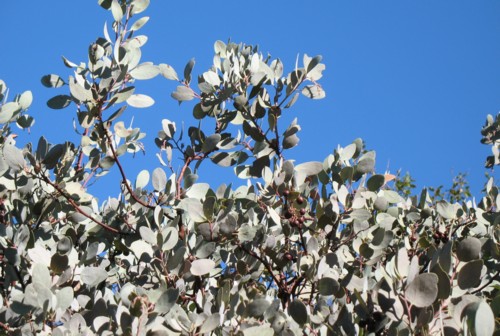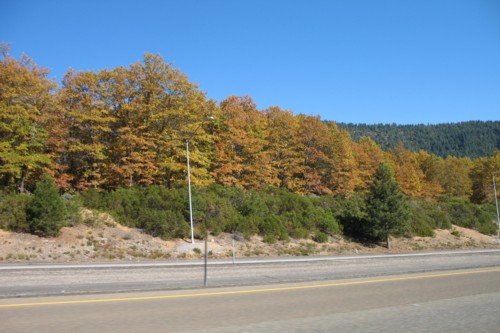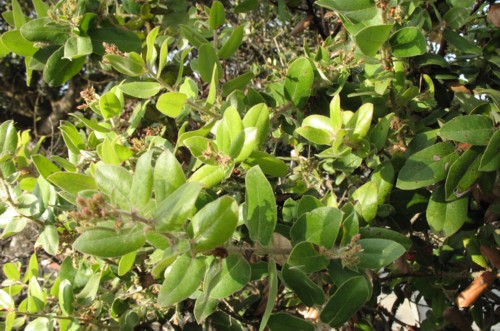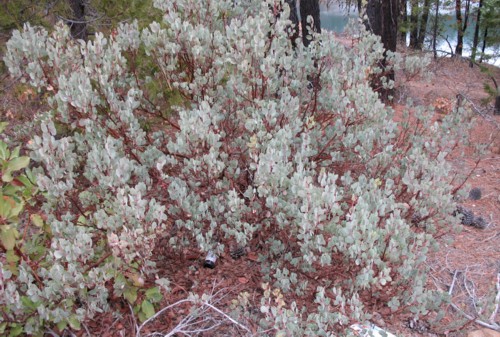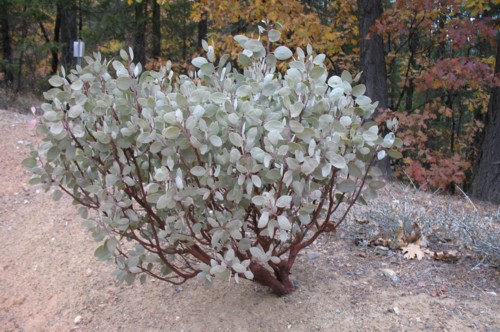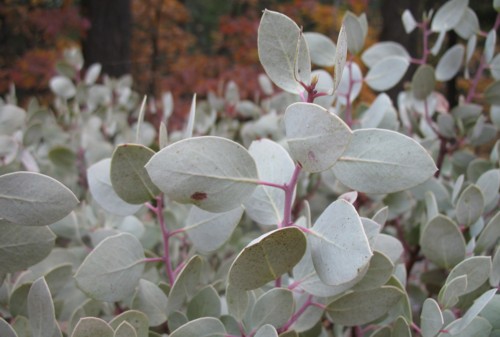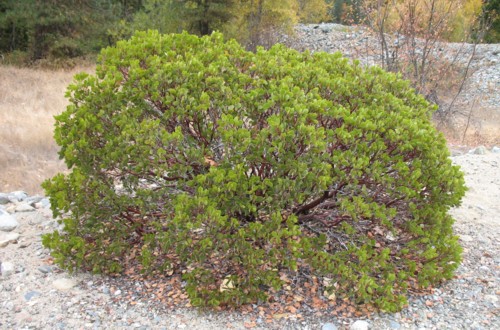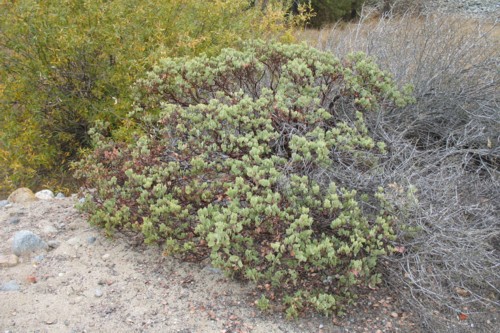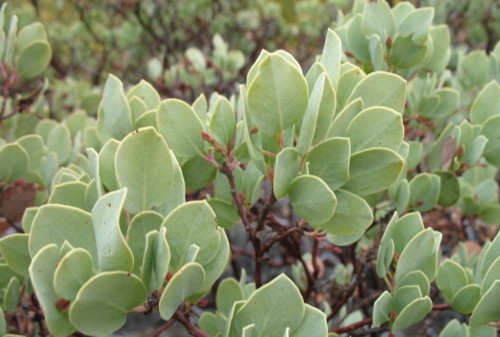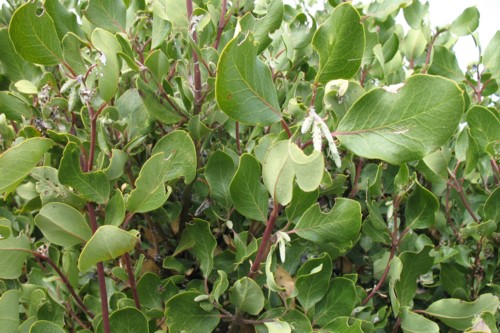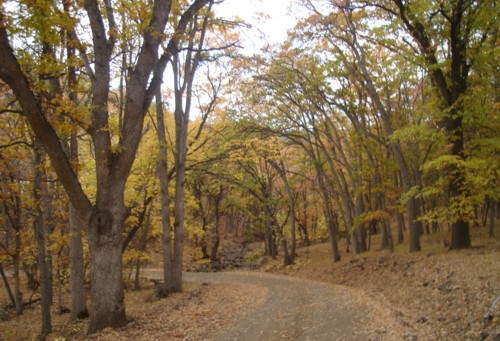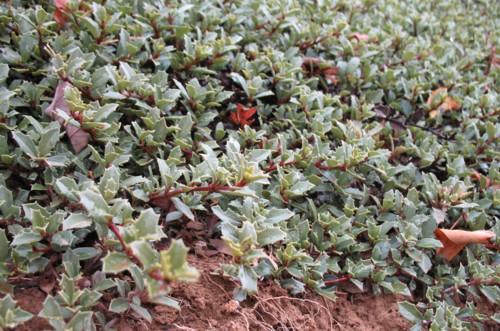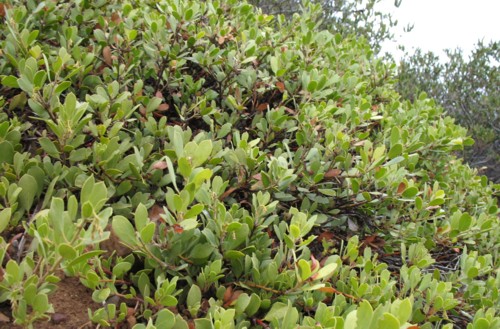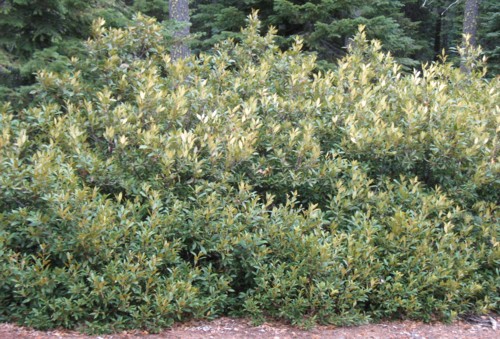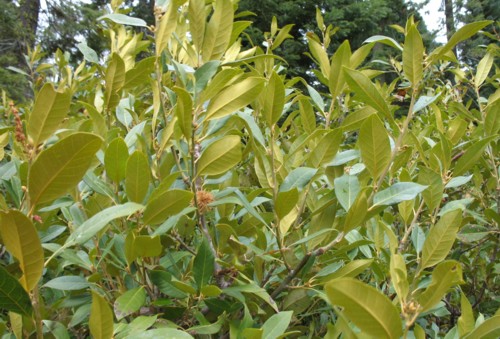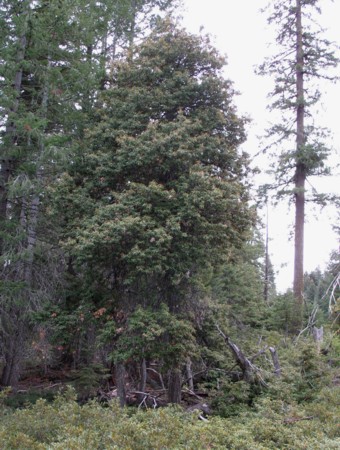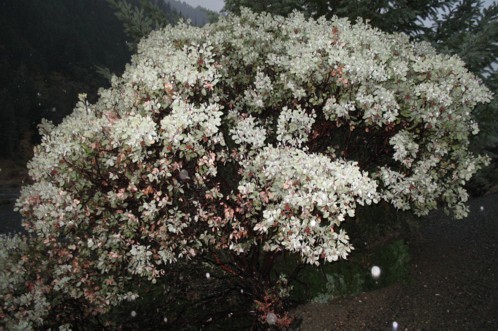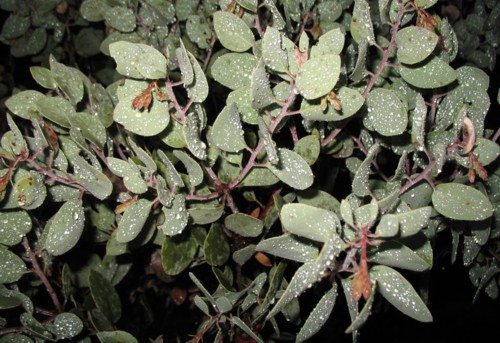|
October/November 2006 For the admirer of subtropical and Mediterranean style gardens, few places are more enticing than California. I took this whirlwind trip with the intent of visiting as many nurseries in the San Francisco Bay Area as possible (at least, those with interesting plants), and returning to a few of my favorite botanic gardens and arboreta, particularly UC Davis, UCSC, UC Berkeley, and San Francisco Botanic Garden, which I sometimes think I should continue to call Strybing Arboretum. Also, I wanted to spend some time exploring for interesting manzanita forms around southwest Oregon, and collect seeds of many western native oaks. I even brought a cooler to put acorns and manzanita cuttings in. (I know that's not what most people bring a cooler for when they go to California... anyways....) And, I wanted to visit a couple old friends with incredible gardens on the Oregon Coast, whom I had not visited in years. However, things did not go exactly as planned. To start with, I tried to do far too many things in an unrealistically short period of time. I spent only three days in the Bay Area (including Watsonville and Santa Cruz), but I really needed six to do justice to everything I wanted to cover. And I didn't even get to see all the nurseries I had hoped to, or explore for wild plants around the Bay Area. Then there was the time I got lost in the mountains near the Klamath River on the Oregon/California border. Oh well - at least I found a nice form of Arctostaphylos patula in there. Then there was the weather, which cooperated splendidly for the first four days, then turned miserable for the last four. Though I left home in a very peaceful and rather dry October, my trip happened to fall on what turned out to be the beginning of a November that brought extreme rains and flooding in the Pacific Northwest. So much for exploring for plants around southwest Oregon. But next year I will endeavor to return to that area around the beginning of October: November is too late to collect a lot of oak seeds anyhow. So here is some of what I saw on this trip - cultivated plants excluded. I didn't take as many pictures of oaks as I was planning to, either. So, it's mostly a lot of manzanitas (Arctostaphylos spp.) and a few other plants in this expedition log. Manzanitas, for those unfamiliar with them, are Ericaceous shrubs, groundcovers and small trees native throughout the west that reach their greatest diversity in California, decreasing in frequency as one goes north and east (Oregon has about eight species (excluding numerous hybrids), Washington has four, British Columbia has two). They are characterized by smooth red bark and branches with rugged, contorted shapes; small bristly leaves; attractive, pendulous, bell-like white or pink flowers followed by berry-like fruits that look like tiny apples (hence "manzanita"); and a preference for gravelly slopes and other semi-xeric habitats, frequently near forest margins and in canyons. Fabulous ornamental plants, they deserve much wider use in cultivation. Most, however, require excellent drainage and a period of summer drought, and are usually unsuitable for gardens that receive irrigation.
As one goes south on I-5 into Oregon, one sees increasingly interesting and diverse woody plants, including Quercus chrysolepis, Arctostaphylos viscida and Arbutus menziesii in abundance. Then approaching Yreka, California, one enters an interesting desert-like area representing the westernmost extension of the interior high deserts of the west. Although colder in winter than the Rogue River and Sacramento River Valleys, it is not as cold as the high deserts of Oregon, northern Nevada, and points east. Near Weed I photographed this wild plant of Ceanothus cuneatus, an example of the more xeric vegetation of this area.
Another interesting plant that is found in inland, drier areas, this is Purshia tridentata.
Here California meets the high desert with Quercus kelloggii growing in abundance.
Arctostaphylos patula occurs farther inland than most manzanitas, and is probably the hardiest of the western, shrbby manzanitas to cold. However, the leaves are a deep green rather than the blue or gray shades that make manzanita so appealing. Here it is near Weed with the 14,162' stratovolcano Mt. Shasta looming in the background.
OK, I'll show one non-native plant. Araucaria araucana, the monkey puzzle tree, is usually found only in decidedly maritime climates. I was surprised to find this specimen in Weed, which, at 3,400' elevation, is the coldest place where I have seen such a large specimen. Clearly it can withstand temperatures a bit below 0°F in a dry western climate; in fact, Weed has recorded historic lows in the neighborhood of -10°F, and the averages indicate very frosty winters. There is a smaller tree in the nearby town of Mt. Shasta.
Arctostaphylos species are notoriously difficult taxonomically. Many species exhibit significant variation, or hybridize or intergrade with one another. Just south of the town of Mt. Shasta, I photographed this much bluer plant that may be A. viscida, or possibly an viscida/canescens hybrid, which may be called A. x cinerea.
A close-up of the above plant.
Ceanothus cordulatus is an attractive light grey shrub found throughout the interior mountains of California. It is rather spiny, however.
At first I thought the previous manzanita was a nice shade of blue. Then I found this brilliantly silver-grey one just a couple miles farther south, around 2,800'. This seems most like an A. viscida form as well.
Fall colors of Quercus kelloggii along with Arctostaphylos patula along I-5 south of Mt. Shasta.
A quick jump down to the California coast between Santa Cruz and Watsonville (sure, there are lots of cool plants in between, but I didn't take enough time to look at most of them), and I saw this manzanita. It may be Arctostaphylos pajaroensis, but I'm not certain.
A close-up of the leaves of the above plant.
I didn't make many pictures of wild plants in the Bay area, so now it's back up north once again. Along Highway 3 north of Weaverville I started to see some plants that looked like Arctostaphylos viscida once again, though different in form from the ones along I-5.
A close-up of the attractive grey leaves and pink stems.
This young plant growing right by the road is one of the nicest manzanita plants I found in this area. Probably another A. viscida form, it had flawless grey leaves and stems recalling the color of the sky in December in Seattle.
A close-up of the leaves of the above plant.
Continuing north, I started to see A. patula again.
This low-growing plant was interesting: it may be an A. patula x A. viscida hybrid.
A close-up of its leaves.
In the Shasta River Canyon north of Yreka, Garrya fremontii peppers the hills. This species occurs as far north as southern Washington near the Columbia River Gorge.
Also in this area, some nice large forms of Arctostaphylos viscida grow in and around the Klamath River Canyon, including a few visible from I-5. This one is a couple miles west of the freeway on Highway 96.
A close-up of the leaves of this plant.
Driving east from there, Quercus kelloggii east of Copco formed substantial forests vageuely recalling the oak forests of the Appalachian Mountains back east.
The nice thing about getting lost and detoured over to the Klamath Falls area was seeing a lot of cool plants on the way back. This is a roadcut along Highway 140 in Oregon near the Cascade Crest at 5,000'. The flat, creeping plants are Ceanothus prostratus (bluish) and Arctostaphylos nevadensis (bright green). The shrubby plants are Ceanothus velutinus.
A close-up of Ceanothus prostratus. This plant produces blue flowers in spring, while those of C. velutinus are white.
The slightly-better-than-prostrate Arctostaphylos nevadensis. This form is larger than the plants I have seen in Washington.
This area is one of the best places to look for Chrysolepis. I think this is C. chrysophylla var. minor, but it could be C. sempervirens. These plants are growing at Lake of the Woods.
A close-up of the leaves, which I thought seemed too large for C. sempervirens.
Very distinct from the minor form is the usual tree-like form of Chrysolepis chrysophylla var. chrysophylla. A bit west of Lake of the Woods, this is one of the coldest places this species is found: temperatures may drop as low as -20°F and a heavy blanket of winter snow is usual.
A close-up of the leaves of Chrysolepis chrysophylla var. chrysophylla. I didn't find seeds on any of these plants, but I may have been too late.
As we drove west through the coast mountains towards Gold Beach, I passed many interesting forms of manzanita in the dark. Sadly, I drove past most of them without stopping to look closely, as it was cold, dark, and foggy; and it began to rain hard. I was just burned out and figured it would be better to come back next year rather than piddling around feebly in the dark.
A close-up of the above plant, which I believe is Arctostaphylos canescens.
Here is a plant I was really excited to see along the roadside in the coast mountains: Quercus sadleriana. Truly an odd little oak, it forms a low, broad shrub with big corrugated leaves. I found lots of empty acorn cups on these plants, but no sign of acorns. This picture alone may entice me to revisit the area next fall! I then continued on to the coast, camping in the rain, and visited Australian plant enthusiast Ben Gardener in Pistol River, and George Guthrie at Shore Acres, and Jim and Janice Gerdemann, all of whom I shall thank again for their hospitality. All of those gardens have grown a lot since I last saw them in 2002, and it was great to catch up with old friends. But as the weather was so awful that I took few pictures, and I certainly didn't stop to take any more pictures of native plants, despite the abundance of interesting things worth photographing. That will have to wait until next year! |
